The Apple ecosystem — which includes the iPhone, iPad, MacBook, Apple Watch, AirPods and Homepod — is something that companies like Microsoft, Samsung and others have tried and failed to imitate. Though some decry Apple’s “walled garden,” it’s hard to argue that it’s the most integrated and user-friendly ecosystem in all of tech. Since Apple only has to make software that runs on its own hardware, it’s easy for the company to quality control everything it produces. This also means Apple can dictate the price of said products, since it provides interoperability its competitors can’t match. Price is undoubtedly a barrier to entry, but the Apple ecosystem isn’t completely impenetrable for the average person. You just need to find the right products for the right price. To that end, we’ve rounded up the most affordable Apple products you can currently buy. With all of these at your disposal, you’ll be fully entrenched in the infamous ecosystem — without breaking the bank.
The Apple ID
The first thing you’ll need isn’t a product at all, but an Apple account. You can create an Apple ID either by registering on one of the company’s devices or by going to the Apple website (opens in new tab). With an Apple ID, you can take full advantage of the ecosystem’s interoperability. Creating an Apple ID is entirely free.
Apple iPhone SE
From our iPhone SE (2022) review: “The iPhone SE (2022) is a phone that crams modern guts into a classic design that’s so small it’s almost quaint. Some might also accurately call it dated. But despite the retro vibes, the end result is pretty compelling for those on a budget. “For $429, you get 5G connectivity and the same A15 Bionic processor that’s in the iPhone 13, which means you’ll enjoy best-in-class performance and great looking photos. Apple also promises two hours of extra battery life with the new SE versus the previous iPhone SE (2020) along with a more durable design. And while you don’t get Face ID, some may prefer the familiar Home button with Touch ID for quickly unlocking your phone. It’s easily one of the best cheap phones around.”
Apple iPad 10.2 (2021)
From our Apple iPad 10.2 (2021) review: “The Apple iPad 2021 is a little different from its predecessor, offering the same winning combination of beauty and speed in a slim, relatively affordable package. It’s still one of the best tablets you can buy, and this year’s model sports a faster A13 Bionic chip and an impressive new front-facing camera that set it apart from earlier models. “However, I could stand to see Apple do a little more to improve the base iPad’s design. It still has thick black bezels around the screen, especially around the top and bottom, and it’s still limited to charging via Lightning cable when most iPads now support USB-C charging. On the bright side, it still has a headphone jack too, which for some people will make this the only iPad worth buying. “Apple’s iPad 2021 is, like its predecessors, a well-made tablet that offers a great screen, smooth performance, and good battery life for a reasonable price. It’s the cheapest iPad Apple sells, but it doesn’t feel cheap, and the upgraded internals and selfie camera are meaningful improvements over the prior iPad.”
Apple Watch Series 3
On its own, the Apple Watch is a great smartwatch with many useful features. Pair it with an iPhone and you’ll unlock the watch’s true potential. Instead of pulling out your phone to check messages, receive calls, or listen to music, you can do these things via an Apple Watch. Though it may not have the robust fitness tracking features of the Apple Watch 7, it has most of what you need. The Apple Watch 3 is a solid device, even if a few years old. It’s waterproof, has GPS, can play music, works with Apple Pay and has heart rate and sleep tracking. Turning to an older model like the Series 3 isn’t a bad way to get started with Apple’s wearables, since the latest Apple watches are not cheap. Despite its age, the Apple Watch 3 also runs the latest watchOS 8 software.
Apple AirPods 3
From our Apple AirPods 3 review: “Apple played it smart with the AirPods 3, offering just enough upgrades to make it a significant step up from the AirPods 2, while also keeping it a few steps below the AirPods Pro. “Essentially, these buds are the AirPods Pro minus the eartips and a handful of features. Several series hallmarks show up on the spec sheet, including Adaptive EQ, spatial audio, and force sensor controls. Apple even added some new tricks to make them more distinctive, including skin detection for auto-pause/play, MagSafe charging, and recently launched iOS 15 features such as Enhanced Find My. Let’s not forget the boost in battery life, either; granted it’s only an hour more, but a win, nonetheless. There’s no denying the triumph that is the AirPods 3.”
MacBook Air with M1
From our MacBook Air with M1 review: “The Apple MacBook Air with M1 takes your idea of what a MacBook Air is, and throws it in the recycling bin. Yes, it’s still got the same iconic wedge aesthetic, but Apple Silicon makes it far more powerful and capable than ever before — destroying Intel’s CPUs and making it a MacBook Pro competitor. Thus, a new era kicked off for the MacBook Air — one with Pro-grade power that challenges Intel-based Windows PCs — and often beats them.”
Homepod Mini
We’re including the Homepod Mini on this list mostly because it’s an Apple product that plays nicely with the company’s other devices. That isn’t to say the Homepod Mini is bad, but out of all the devices we’ve discussed, it’s the least essential piece of the Apple ecosystem pie. However, if you want to be a completionist and own every single device in said ecosystem, the Homepod mini’s standard $99 asking price at Best Buy (opens in new tab) won’t sting too badly.
Other benefits of the Apple ecosystem
Cloud services like AirDrop and iCloud help tie the Apple ecosystem. With AirDrop, you can easily share and receive photos, documents and more with nearby Apple devices. iCloud lets you store said files and apps in Apple’s cloud servers so you can access them wherever you are and across multiple Apple devices. Pairing Apple devices to one another doesn’t require much effort. For example, if you get a new pair of AirPods, all you have to do to pair them with your phone is open the AirPods’ case. It’s touches like this that make the Apple ecosystem so inviting and user-friendly.
Final cost
At the time of writing, everything on this list will cost $2,084. If we take away the Homepod Mini, the total comes to $1,985. That amount is still hefty, but considering how the entry-level MacBook Pro 14-inch alone costs $1,999, spending nearly that much on so many great products lessens the blow. Apple’s products aren’t always the most budget-friendly, but if you can spring a little over $2,000 for what we’ve listed here, then you can enter the company’s consumer-friendly ecosystem.
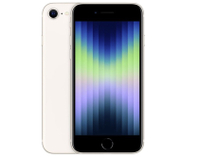
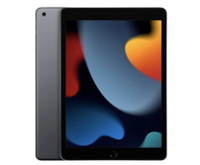
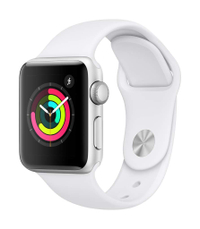
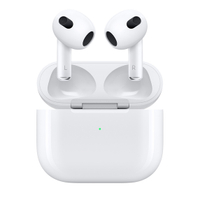
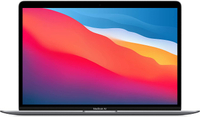
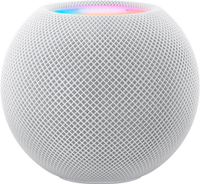
title: “These Are The Best Cheap Products For Entering The Apple Ecosystem” ShowToc: true date: “2022-12-14” author: “Steve Brown”
The Apple ecosystem — which includes the iPhone, iPad, MacBook, Apple Watch, AirPods and Homepod — is something that companies like Microsoft, Samsung and others have tried and failed to imitate. Though some decry Apple’s “walled garden,” it’s hard to argue that it’s the most integrated and user-friendly ecosystem in all of tech. Since Apple only has to make software that runs on its own hardware, it’s easy for the company to quality control everything it produces. This also means Apple can dictate the price of said products, since it provides interoperability its competitors can’t match. Price is undoubtedly a barrier to entry, but the Apple ecosystem isn’t completely impenetrable for the average person. You just need to find the right products for the right price. To that end, we’ve rounded up the most affordable Apple products you can currently buy. With all of these at your disposal, you’ll be fully entrenched in the infamous ecosystem — without breaking the bank.
The Apple ID
The first thing you’ll need isn’t a product at all, but an Apple account. You can create an Apple ID either by registering on one of the company’s devices or by going to the Apple website (opens in new tab). With an Apple ID, you can take full advantage of the ecosystem’s interoperability. Creating an Apple ID is entirely free.
Apple iPhone SE
From our iPhone SE (2022) review: “The iPhone SE (2022) is a phone that crams modern guts into a classic design that’s so small it’s almost quaint. Some might also accurately call it dated. But despite the retro vibes, the end result is pretty compelling for those on a budget. “For $429, you get 5G connectivity and the same A15 Bionic processor that’s in the iPhone 13, which means you’ll enjoy best-in-class performance and great looking photos. Apple also promises two hours of extra battery life with the new SE versus the previous iPhone SE (2020) along with a more durable design. And while you don’t get Face ID, some may prefer the familiar Home button with Touch ID for quickly unlocking your phone. It’s easily one of the best cheap phones around.”
Apple iPad 10.2 (2021)
From our Apple iPad 10.2 (2021) review: “The Apple iPad 2021 is a little different from its predecessor, offering the same winning combination of beauty and speed in a slim, relatively affordable package. It’s still one of the best tablets you can buy, and this year’s model sports a faster A13 Bionic chip and an impressive new front-facing camera that set it apart from earlier models. “However, I could stand to see Apple do a little more to improve the base iPad’s design. It still has thick black bezels around the screen, especially around the top and bottom, and it’s still limited to charging via Lightning cable when most iPads now support USB-C charging. On the bright side, it still has a headphone jack too, which for some people will make this the only iPad worth buying. “Apple’s iPad 2021 is, like its predecessors, a well-made tablet that offers a great screen, smooth performance, and good battery life for a reasonable price. It’s the cheapest iPad Apple sells, but it doesn’t feel cheap, and the upgraded internals and selfie camera are meaningful improvements over the prior iPad.”
Apple Watch Series 3
On its own, the Apple Watch is a great smartwatch with many useful features. Pair it with an iPhone and you’ll unlock the watch’s true potential. Instead of pulling out your phone to check messages, receive calls, or listen to music, you can do these things via an Apple Watch. Though it may not have the robust fitness tracking features of the Apple Watch 7, it has most of what you need. The Apple Watch 3 is a solid device, even if a few years old. It’s waterproof, has GPS, can play music, works with Apple Pay and has heart rate and sleep tracking. Turning to an older model like the Series 3 isn’t a bad way to get started with Apple’s wearables, since the latest Apple watches are not cheap. Despite its age, the Apple Watch 3 also runs the latest watchOS 8 software.
Apple AirPods 3
From our Apple AirPods 3 review: “Apple played it smart with the AirPods 3, offering just enough upgrades to make it a significant step up from the AirPods 2, while also keeping it a few steps below the AirPods Pro. “Essentially, these buds are the AirPods Pro minus the eartips and a handful of features. Several series hallmarks show up on the spec sheet, including Adaptive EQ, spatial audio, and force sensor controls. Apple even added some new tricks to make them more distinctive, including skin detection for auto-pause/play, MagSafe charging, and recently launched iOS 15 features such as Enhanced Find My. Let’s not forget the boost in battery life, either; granted it’s only an hour more, but a win, nonetheless. There’s no denying the triumph that is the AirPods 3.”
MacBook Air with M1
From our MacBook Air with M1 review: “The Apple MacBook Air with M1 takes your idea of what a MacBook Air is, and throws it in the recycling bin. Yes, it’s still got the same iconic wedge aesthetic, but Apple Silicon makes it far more powerful and capable than ever before — destroying Intel’s CPUs and making it a MacBook Pro competitor. Thus, a new era kicked off for the MacBook Air — one with Pro-grade power that challenges Intel-based Windows PCs — and often beats them.”
Homepod Mini
We’re including the Homepod Mini on this list mostly because it’s an Apple product that plays nicely with the company’s other devices. That isn’t to say the Homepod Mini is bad, but out of all the devices we’ve discussed, it’s the least essential piece of the Apple ecosystem pie. However, if you want to be a completionist and own every single device in said ecosystem, the Homepod mini’s standard $99 asking price at Best Buy (opens in new tab) won’t sting too badly.
Other benefits of the Apple ecosystem
Cloud services like AirDrop and iCloud help tie the Apple ecosystem. With AirDrop, you can easily share and receive photos, documents and more with nearby Apple devices. iCloud lets you store said files and apps in Apple’s cloud servers so you can access them wherever you are and across multiple Apple devices. Pairing Apple devices to one another doesn’t require much effort. For example, if you get a new pair of AirPods, all you have to do to pair them with your phone is open the AirPods’ case. It’s touches like this that make the Apple ecosystem so inviting and user-friendly.
Final cost
At the time of writing, everything on this list will cost $2,084. If we take away the Homepod Mini, the total comes to $1,985. That amount is still hefty, but considering how the entry-level MacBook Pro 14-inch alone costs $1,999, spending nearly that much on so many great products lessens the blow. Apple’s products aren’t always the most budget-friendly, but if you can spring a little over $2,000 for what we’ve listed here, then you can enter the company’s consumer-friendly ecosystem.





